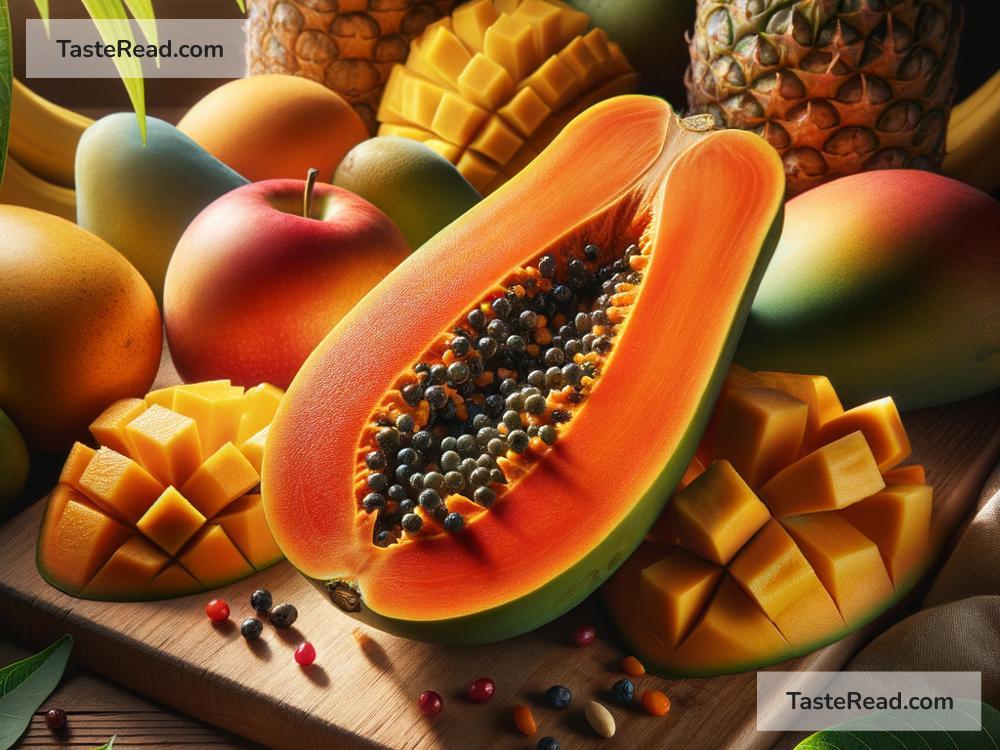The Mystery Behind Papaya’s Vibrant Orange Color
Papaya is one of nature’s most colorful and delicious fruits. Its vibrant orange flesh is a feast for the eyes and a treat for the taste buds. But have you ever wondered why papayas are orange? What gives them their beautiful, sunny color? The answer lies in the fascinating world of science, nature, and nutrition.
Let’s dive into the mystery behind the papaya’s bright orange hue and uncover some amazing facts along the way.
Carotenoids: Nature’s Color-makers
The orange color of papayas comes from a group of natural compounds called carotenoids. Carotenoids are pigments found in many fruits, vegetables, and plants. These pigments create the yellow, orange, and red colors we see in foods like carrots, tomatoes, mangoes, and, of course, papayas.
Carotenoids aren’t just pretty—they’re also powerful. They play an important role in the health of plants and humans alike. In plants, carotenoids help with photosynthesis, the process of converting sunlight into energy. For humans, they act as antioxidants, protecting our cells from damage and boosting our overall health.
Beta-Carotene: The Star Behind the Orange
Among the many types of carotenoids, beta-carotene is the one that’s responsible for the papaya’s orange glow. Beta-carotene is a pigment that gives carrots their bright orange color, and it’s also found in high amounts in papayas.
But beta-carotene doesn’t just make things look pretty. It’s a type of provitamin A, which means the body can convert it into vitamin A. Vitamin A is essential for good vision, a healthy immune system, and glowing skin. So, when you’re enjoying a slice of papaya, you’re not just tasting a delicious fruit—you’re also giving your body a healthy dose of vitamin A!
Why Are Papayas Orange, Not Green?
Papayas start their journey as green fruits. When they are unripe, their skin is green, and the flesh inside is often white or pale yellow. This is because unripe papayas don’t have much beta-carotene. Instead, they are packed with chlorophyll—a green pigment that helps plants capture sunlight during photosynthesis.
As papayas ripen, something amazing happens. The chlorophyll breaks down, and the papaya starts producing more carotenoids, including beta-carotene. This is when the flesh turns from pale white or yellow to bright orange. The ripening process transforms the papaya into the beautiful, tasty fruit we all love.
The Link Between Color and Nutrition
Interestingly, the orange color of papayas is not just a visual treat—it’s also a signal of their nutritional benefits. The deeper the orange color, the higher the concentration of beta-carotene and other carotenoids. This means that choosing a perfectly ripe papaya not only guarantees a delicious flavor but also ensures maximum health benefits.
Other fruits and vegetables follow a similar trend. For example, deeply colored spinach and kale have lots of chlorophyll and nutrients. Bright orange carrots or dark red tomatoes are rich in carotenoids. Nature has a clever way of showing us which foods are packed with goodness, simply through their colors.
How Papayas Compare to Other Fruits
Papayas aren’t the only fruits with carotenoids, but they do stand out because of their high beta-carotene content. Mangoes, oranges, cantaloupes, and pumpkins also owe their orange hues to carotenoids. However, papayas are unique because of their smooth, buttery texture and tropical sweetness, making them incredibly versatile in dishes.
What sets papayas apart is their balance of carotenoids and other nutrients like vitamin C, potassium, and folate. This combination makes them a powerhouse fruit that’s great for your overall health.
Fun Facts About Papayas and Their Color
-
Different varieties of papayas have different shades of orange. Some papayas are a lighter yellow-orange, while others are a deeper orange-red. This depends on the variety and the levels of carotenoids in the fruit.
-
Papaya leaves and seeds don’t have the same orange pigments. The leaves and seeds are green and black, respectively, showing a lack of carotenoids.
-
Carotenoids are fat-soluble. This means that eating papaya with a little healthy fat, like avocado or nuts, can help your body absorb its carotenoids better.
-
Papayas thrive in sunny, tropical climates. The sunlight helps the fruit produce more carotenoids, resulting in rich, vibrant colors and flavors.
The Beauty of Nature’s Palette
The bright orange color of papayas reminds us how wonderful and complex nature can be. The process of ripening, the presence of carotenoids, and the impact of sunlight all contribute to creating this colorful fruit. Papayas are not just a tasty snack; they’re a masterpiece of biology and nutrition.
So, the next time you cut open a papaya and see its cheerful orange flesh, take a moment to appreciate the incredible science and beauty behind it. Whether you enjoy papayas in a smoothie, a fruit salad, or just on their own, remember that you’re eating more than just a fruit—you’re indulging in a vibrant piece of nature’s wonder.
Let the papaya’s color brighten your day and nourish your body!


